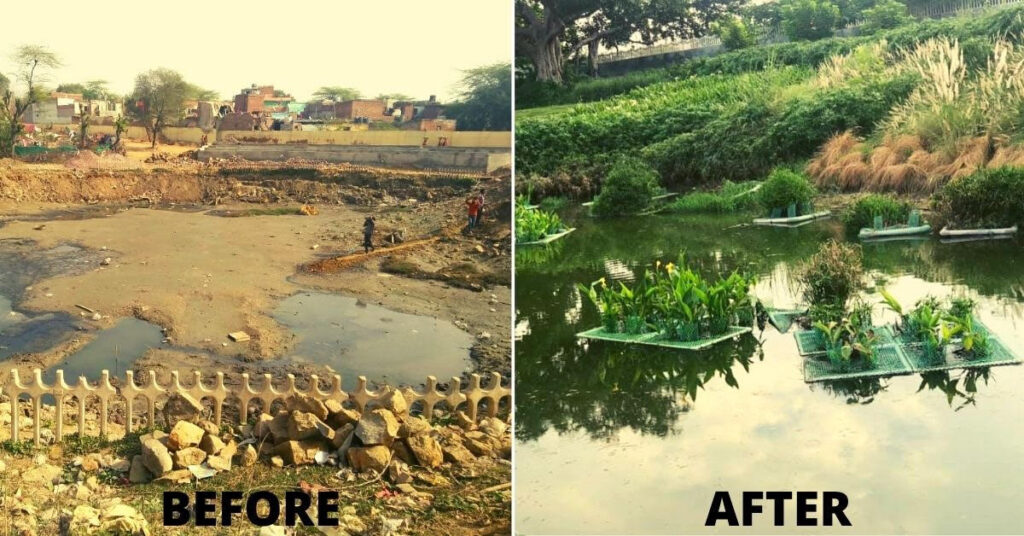Building to Integrate Kindness-Centric Designs in Urban Spaces and Architecture for Extreme Summers

Building to Integrate Kindness-Centric Designs in Urban Spaces and Architecture for Extreme Summers
Integrating kindness-centric designs for cooler, liveable cities, from innovative strategies and vertical gardens to public facilities, all prioritise human comfort amidst scorching summers. Traditional wisdom merges with modern solutions, creating compassionate urban environments resilient to extreme heat.
1 May 2024
As temperatures soar and urban heat islands intensify, cities across India are bracing for an exceptionally scorching summer ahead. With the Indian Meteorological Department (IMD) predicting a surge in heatwave days and maximum temperatures surpassing 40 degrees Celsius in some regions, the need for effective heat management strategies has never been more pressing. In response, urban planners, architects, and policymakers are increasingly turning to kindness-centric designs that prioritise human comfort and well-being, integrating elements such as shade, rest and water to create cooler and more liveable urban environments.
In the bustling realm of urban design and architecture, a profound shift is underway—one that prioritises kindness as a guiding principle. What if every architectural marvel and urban space was crafted not just for aesthetic appeal or profit, but with a genuine concern for the well-being of its inhabitants?
City-based designers and architects are at the forefront of reshaping the urban landscape with practices grounded in ethics of care and kindness. From ensuring safety and accessibility to fostering diversity and sustainability, these professionals share insights on infusing urban spaces with a spirit of empathy and compassion.
Sustainability with Substance: In the pursuit of kindness, sustainability emerges as a guiding principle. Juxtaposing aesthetics with ethical responsibility, designers like Ashwini Shwetha Ketharaj, the visionary founder of ASK Space Design Studio, showcase innovative solutions that mitigate environmental impact while uplifting communities. From repurposing fabric waste into chic interior accents to crafting furniture from reclaimed wood, each creation embodies a commitment to reducing the ecological footprint and fostering fair labour practices.
Green Infrastructure; Vertical Gardens and Beyond: Green infrastructure emerges as a potent solution in combating urban heat islands, with initiatives like planting trees along streets and integrating green-blue corridors within urban planning gaining momentum. Singapore’s iconic Gardens by the Bay stands as a testament to the effectiveness of such initiatives, featuring Super-Trees that provide shade, harness solar energy and collect rainwater. By investing in similar green infrastructure projects, cities can not only combat heat but also promote biodiversity and community well-being.
Water Management; Reviving Traditional Solutions: Traditional Indian architectural wonders like baolis, or step-wells, offer timeless solutions for summer relief by recharging groundwater and providing natural cooling. By rejuvenating water bodies like the Rajokri waterbody in New Delhi through scientific wetland systems, cities can improve water quality, promote groundwater recharge and create green spaces for public gatherings. Drawing inspiration from such traditional practices, modern urban planning can integrate water features and vegetation as heat sinks, contributing to cooler and more sustainable environments.
Public Transportation; Reducing Urban Heat Emissions: Efficient public transportation networks not only reduce reliance on private vehicles but also mitigate heat-related issues by lowering vehicle emissions. Cities like Curitiba, Brazil, have set a precedent with their Bus Rapid Transit (BRT) system, which promotes public transport usage and contributes to a cooler and more sustainable urban environment. By prioritising shared infrastructure and active modes of transportation, cities can combat heat while fostering community and connectivity among residents.
Public Facilities; The Return of Drinking Water Utilities: Reviving traditional amenities like drinking water utilities, known as ‘you’, can offer much-needed relief from the heat while promoting social interaction and cohesion. By envisioning public spaces as welcoming havens with drinking water facilities, cities can create compassionate urban environments.
Building Regulations; Prioritising Heat-Resilient Materials: Environmentally conscious building regulations play a crucial role in reducing building heat gain and promoting heat resilience. By prioritising heat-resilient materials, natural ventilation and shading techniques, cities can significantly lower temperatures. Traditional Indian architectural features like chajjas (projecting eaves) and jaalis (perforated screens) have long promoted natural ventilation and shade. Modern buildings can leverage these principles by incorporating balconies and terraces, facilitating seamless indoor-outdoor transitions while shielding interiors from direct heat gain.
Innovative Facade Systems; Sun-Tracking Panels and Automated Shading: Modern buildings can incorporate innovative facade systems, such as systems which utilise sun-tracking panels or automated shading mechanisms to adjust the angle or position of louvres, shades or panels based on factors such as sunlight intensity, wind direction and outdoor temperature. Complementing these are shading devices like awnings, canopies and fins, strategically positioned to cast shadows and provide shade to building surfaces, windows and outdoor spaces. By adjusting these shading devices based on factors like sunlight intensity and outdoor temperature, buildings can maintain comfortable indoor temperatures while reducing energy consumption.
Green Roofs; Insulation and Stormwater Management: Installing green roofs not only provides insulation but also reduces stormwater runoff, contributing to significantly lower indoor temperatures. Individuals can also contribute to heat resilience by incorporating small water features or drinking water facilities at private boundary walls.
Inclusive Environments: The hallmark of a kind interior lies in its ability to prioritise well-being—be it through ample ventilation, natural light or inviting communal areas. By embracing Universal Design Concepts, architects like Bolgum Sai Aditya ensure that city spaces cater to diverse needs.
A Call to Kindness: By centering people, animals and nature in the design narrative, architects and designers usher in a new era of inclusivity and respect. Kindness isn’t just a design choice; it’s a profound statement of care and consideration—a sentiment echoed by designers and architects alike.
The integration of kindness-centric designs that emphasise the fusion of shade, rest and water as essential elements for extreme summers holds the key to creating cooler, more liveable cities. By drawing inspiration from traditional practices and merging them with contemporary strategies, cities can build resilience to the heat while prioritising the well-being of their residents. As we brace for the challenges of a warming world, let us work together to build cities that beat the heat with compassion and innovation.












